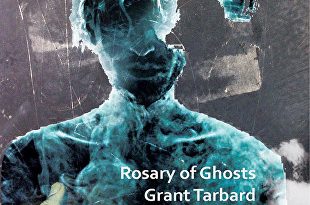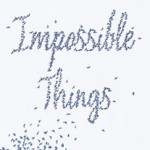Yellow Wolf by Grant Tarbard
– Reviewed by Jeremy Gordon –
Who or what is the Yellow Wolf?
The yellow wolf is
a dust angel with
piranha teeth, his
place in Heaven is
assured by his kills.[‘Assurances’]
Grant Tarbard is a one-time computer games journalist and football fanzine contributor, former editor of the now defunct The Screech Owl and co-founder of Resurgant Press, as well as a Sabotage Reviews contributor. The poems in Yellow Wolf, from Ohio’s Writing Knights Press, all concern ‘the yellow wolf’ (sometimes yellow wolf, sometimes just wolf, sometimes just a pronoun) and are all five lines of five syllables. In this haiku-like form, the yellow wolf becomes both the protagonist and a vehicle for wide-ranging imagery, with touches of sci-fi and the supernatural. The first poem, for me, recalls computer game violence, as does the yellow wolf attacking “in / black and white noir with / Cerberus steel teeth” (‘His Black Dog Mood’).
Tarbard also evokes a fairy-tale atmosphere, heavy with allegory. The ‘Unmade Forest’ is a recurring setting: “Yellow wolf lives in / the Unmade Forest.”; ‘Yellow wolf paces / invader footfalls / from the death hunter / into the Unmade / Forest…” in ‘Hunter’ (I) and (II):
Yellow wolf, the scent:
transient horror of
the woven hunter
into the Unmade
Forest. Leaves Lament.
What the Unmade Forest might represent is, naturally, obscure. The sky and the moon feature heavily but not, as one might expect, always in evocations of darkness from under a dense forest canopy. In ‘Seclusion’
Yellow wolf sighs, his
look of cobwebs is
a puncture wound in
these blue petals of
his sky solitude.
These metaphors take some unpacking, not all of it fruitful. I read ‘his look of cobwebs’ as wispy clouds, which makes little sense as a ‘puncture wound’ in the sky. Still, when the language is as playful and attractive as this (“blue petals of / his sky solitude”) it matters little. Tarbard is strong on colour; for example, the image of “Yellow wolf, naked / in midnight’s blood of / orange sepia” (‘Yellow Wolf on Orange’).
The rhythm of the poems is stumbling: five syllables is an awkward number, particularly when read or heard over and over, and many of the words feel somehow heavy, creating a tension between nouns and adjectives which Tarbard exploits well in poems like ‘Time Thinks of a Wolf’:
And when yellow wolf
thinks of the world he
shudders within a
crumbling dust jacket
of powdered clock ticks.
Does crumbling describe a dust jacket, or does crumbling dust describe a jacket? Powdered clock-ticks or powdered-clock ticks? How about ‘Summer Dusk’:
Yellow wolf, sun drenched.
There’s a musty eve
coming across the
world in a curved arch
with invitation.
Initially this poem feels contradictory and tautologous. ‘Sun drenched’, yet ‘a musty eve’; ‘a curved arch’. Returning, I felt the originality of the connection between ‘drenched’ and ‘musty’; I considered ‘curved arch’ not as a single phrase, but as a ‘curved [something]’ that is ‘arch / with invitation’.
The pitfall of Tarbard’s form is that for every instance like these, where words become skilfully doubled and loaded, there is another instance when it doesn’t work. One word out of place and it’s all disappointing and forgettable. Poetry in general is no place for slack words but Yellow Wolf’s form places so much weight on the personal connotations of every word and phrase for each reader or listener, that it is particularly hit or miss.
So, who or what is the yellow wolf? There is no answer. The yellow wolf / wolf is elusive – he “shuns big cities and smoke. Landscape of the fox…” Yet the collection’s final poem, ‘The Ascent to Heaven’, with its “cold grey dawn, / pissing on the soil / carpet of the earth” does feel conclusive, built to and arrived at. Lines like these could be clichéd, but they aren’t.
Yellow Wolf is a strange, singular, naggingly compelling collection which can be frustrating. On first reading, I didn’t really ‘get it’. I’m still not sure I do. I sense, though, that these queer little poems will reward repeated reading, revealing previously unperceived patterns and new word-meanings. Tarbard’s form may be double-edged but it creates a texture in which it is ultimately difficult to separate Yellow Wolf’s best moments from whatever or whomever you find the yellow wolf to be. It’s a kind of concept-album, with the natural extravagance and theatrically of that genre, but rather than sprawling over two LPs full of proggy guitar noodling it’s packed into a slight, punchy 26-page collection. In this form, Yellow Wolf just about works.





